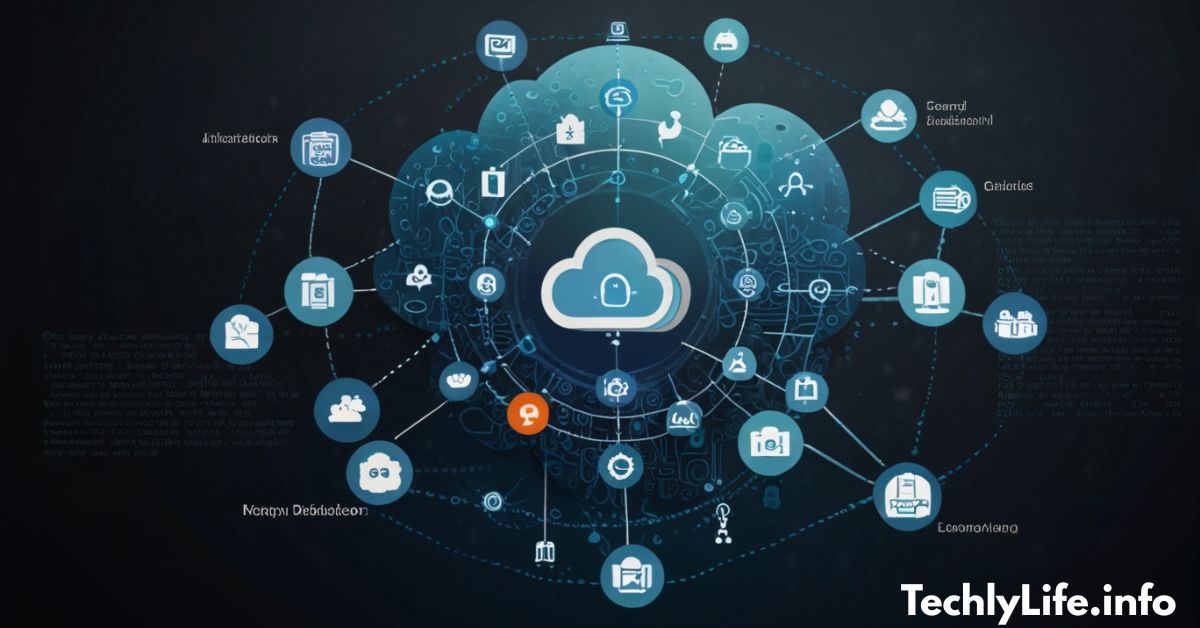As businesses continue to migrate to the cloud, the way networks are built and managed is rapidly evolving. Enter cloud network technology, a revolutionary approach that allows organizations to run and manage their networking infrastructure in the cloud instead of relying solely on on-premises hardware.
Whether you’re a tech beginner or an IT professional, this guide will break down what cloud networking is, how it works, its benefits, and what the future holds.
How Does Cloud Networking Work?
Cloud networking refers to hosting or using network resources such as virtual routers, firewalls, bandwidth, and load balancers within a cloud infrastructure. These virtual components can be managed remotely through software-defined networking (SDN) and accessed on demand, providing businesses with flexible, scalable, and secure network solutions.
Instead of building a physical network with servers, switches, and firewalls, cloud networking uses virtual equivalents hosted in data centers by providers like Amazon Web Services (AWS), Microsoft Azure, and Google Cloud.
Cloud Network vs. Traditional Network: Key Differences
| Feature | Traditional Network | Cloud Network |
| Infrastructure | On-premises hardware | Virtual/cloud-hosted |
| Scalability | Limited, manual | Dynamic, on-demand |
| Cost | High upfront cost | Pay-as-you-go |
| Accessibility | Local access | Global access |
| Maintenance | Handled internally | Managed by provider |
Cloud networking empowers organizations to respond faster to changes, scale resources easily, and reduce operational complexity.
Types of Cloud Network Technology
1. Public Cloud
Managed by third-party providers, public cloud networks like AWS or Azure are shared across multiple users. They’re cost-effective and ideal for small to mid-sized businesses that want scalability without infrastructure investments.
2. Private Cloud
Dedicated exclusively to one organization, private clouds offer more control and security. These are ideal for industries with compliance requirements (e.g., finance, healthcare).
3. Hybrid Cloud
A hybrid cloud combines private and public networks, allowing data and applications to move between the two. This approach offers flexibility for businesses that want both security and scalability.
4. Multi-Cloud
Multi-cloud strategies involve using services from multiple cloud providers. This reduces dependency on one vendor and enhances redundancy, performance, and security.
Key Benefits of Cloud Network Technology
- Scalability on Demand
Add or reduce resources instantly based on current needs. - Cost Efficiency
Avoid capital expenditure on hardware; pay only for what you use. - Global Access
Teams across the globe can connect through unified, secure cloud networks. - High Performance & Speed
Faster deployments, optimized routing, and low latency are standard. - Data Backup & Disaster Recovery
Cloud networking makes restoring data easy in case of outages or breaches. - Security & Compliance
With built-in encryption, firewalls, and monitoring tools, cloud networks provide a strong security foundation.
Common Use Cases in 2025
- Remote Work: Secure VPN alternatives and cloud gateways support global remote teams.
- IoT Connectivity: Devices communicate through edge-cloud networks for real-time insights.
- E-commerce: Retailers scale networks during peak shopping seasons seamlessly.
- AI & Machine Learning: Data pipelines run smoothly through scalable, high-bandwidth cloud networks.
Challenges and Limitations
While cloud networking offers numerous advantages, it’s not without hurdles:
- Vendor Lock-in: Relying heavily on one provider can reduce flexibility.
- Latency Issues: In some regions, internet speed can affect performance.
- Complexity in Hybrid Environments: Managing multiple clouds and data transfers requires expert oversight.
- Security Misconfigurations: A poorly configured system can still be vulnerable, regardless of provider.
Future of Cloud Networking: Trends to Watch
- AI-Driven Network Automation: Networks will self-optimize and self-heal using AI.
- 5G & Edge Computing: Expect near-zero latency for connected devices.
- Zero Trust Security Models: Every connection, user, and request will be verified before access.
- Quantum Networking: Still emerging, but may redefine data transmission security.
Final Thoughts
Cloud network technology is no longer just a trend, it’s the future of enterprise IT. From its cost-effective nature to its flexibility and scalability, cloud networking allows businesses to stay agile, secure, and competitive.
As 2025 progresses, integrating cloud network technologies will become essential, not optional. Whether you’re a startup or a Fortune 500 company, the time to leverage cloud networking is now.
Read More: Pokemon go fest 2025
FAQs
Is cloud networking the same as cloud computing?
No. Cloud computing deals with delivering services (like storage or processing power), while cloud networking focuses on the connectivity and infrastructure that enables these services.
Can I use cloud networking for my small business?
Absolutely. Public cloud services are affordable and scalable, perfect for small businesses that want reliable IT resources without infrastructure costs.
How secure is cloud networking?
Cloud networking can be extremely secure if properly configured. Leading providers offer encryption, firewalls, compliance tools, and identity management systems.
What is a good example of cloud networking?
Using AWS VPC (Virtual Private Cloud) to host your website’s backend and control network access is a common use case.
What skills are needed for cloud networking jobs?
Skills include networking basics (TCP/IP, DNS), cloud platforms (AWS, Azure), automation (Terraform), and security protocols.

Ember is an experienced content creator specializing in technology, travel, and heartfelt messages. Through TechlyLife.info, Ember delivers reliable, engaging, and meaningful content that connects with readers across all walks of life.

